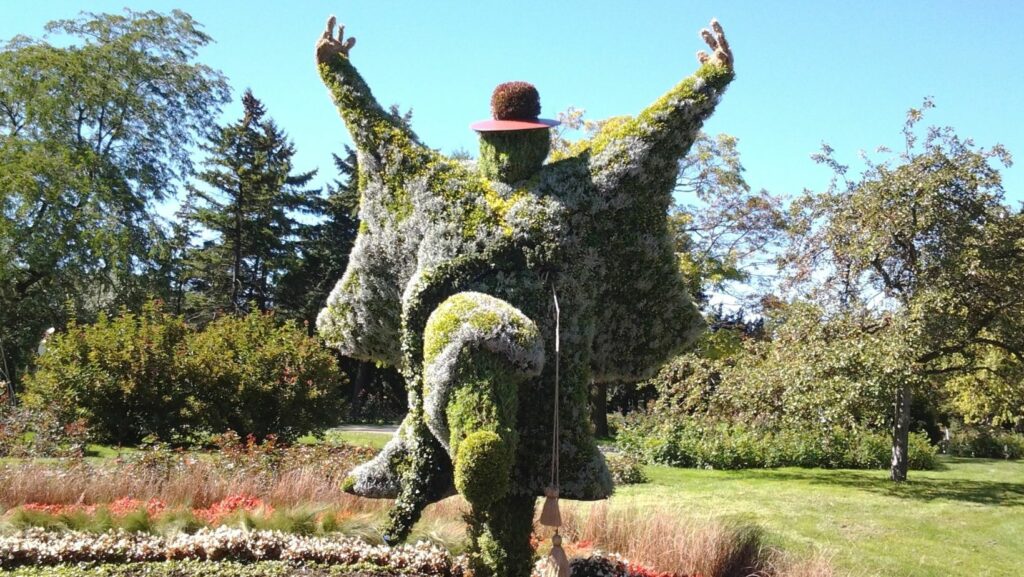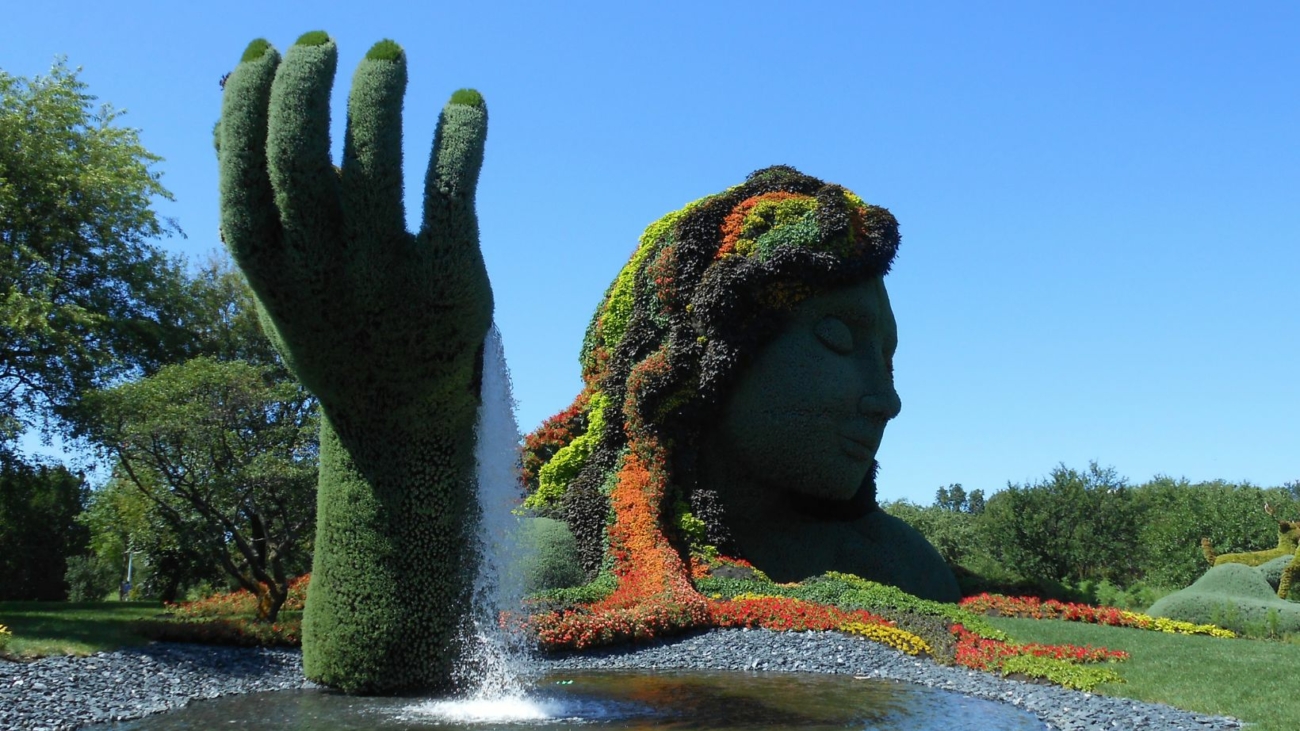Key Takeaways
- Unique Artistry: The living sculptures at the Montreal Botanical Gardens blend horticulture and art, transforming plants into imaginative forms that captivate visitors.
- Cultural Reflection: Each sculpture reflects local ecosystems and cultural narratives, emphasizing the rich history and diversity of Quebec’s heritage.
- Ecological Awareness: These installations promote sustainability by highlighting ecological practices and showcasing the relationship between art and the environment.
- Visitor Experience: The best times to visit are spring and summer for vibrant displays, while guided tours enrich understanding of the artistic significance behind the sculptures.
- Dynamic Installation Types: Living sculptures vary from topiary forms to vertical gardens, each offering distinct characteristics and immersive experiences.
- Year-Round Engagement: Special events and seasonal festivals enhance the visitor experience, providing opportunities to engage deeply with both art and horticulture.
Nestled in the heart of Montreal, the Botanical Gardens offer a stunning fusion of nature and artistry through its captivating living sculptures. These unique installations transform the landscape into a vibrant tapestry of color and form, showcasing the beauty of horticultural creativity. Visitors are drawn into a world where plants become the medium for imaginative expressions, inviting them to explore the intersection of art and nature.
As one strolls through the gardens, they’ll encounter an array of living sculptures that not only mesmerize the eye but also spark curiosity about the artistry behind them. Each piece tells a story, reflecting the diverse ecosystems and cultural influences that define this remarkable space. Discovering these botanical masterpieces is an unforgettable experience that highlights the innovative spirit of Montreal’s artistic community.
Living Sculptures Montreal Botanical Gardens
Living sculptures at the Montreal Botanical Gardens embody the seamless fusion of horticulture and artistic expression. These installations feature a variety of plant species sculpted into imaginative forms, drawing visitors into a world where nature serves as the canvas.
Each sculpture showcases techniques such as topiary, where plants are trimmed into specific shapes, and living walls that present vibrant, lush displays. Visitors encounter towering figures, intricate patterns, and thematic representations that reflect the cultural heritage and regional ecology of Quebec.
Noteworthy installations include representations of local wildlife and historical figures, all crafted from carefully curated flora. These installations not only enhance the visual appeal of the gardens but also promote ecological awareness by demonstrating sustainable practices in art.
The dynamic interplay of colors, textures, and shapes creates an immersive experience appealing to art enthusiasts and nature lovers alike. Each visit reveals new details, ensuring that living sculptures remain a focal point of the Montreal Botanical Gardens’ rich artistic landscape.
History of the Montreal Botanical Gardens
The Montreal Botanical Gardens, established in 1931, reflect a rich tapestry of horticultural achievement and artistic innovation. Over the decades, the gardens have evolved into a renowned destination for both natural beauty and creative expression.

Development of the Gardens
Development of the Montreal Botanical Gardens began in the early 20th century, driven by the vision of a green sanctuary in the heart of the city. They encompass 185 acres with over 22,000 plant species, divided into thematic gardens and greenhouses. Funding from the City of Montreal and contributions from private groups facilitated initial construction. Key milestones include the completion of the First Nations Garden in 2006 and the Japanese Garden, showcasing intricate designs and cultural significance.
Introduction of Living Sculptures
Introduction of living sculptures occurred as part of an artistic initiative to enhance the gardens’ cultural offerings. These sculptures emerged in the late 20th century, highlighting the intersection of nature and art. Since then, installations have grown to include diverse themes, reflecting local history and environmental values. Visitors encounter various plant-based sculptures that embody local wildlife and historical elements. The living sculptures contribute to ecological awareness while transforming the landscape into a dynamic artistic canvas.
Features of the Living Sculptures
Living sculptures at the Montreal Botanical Gardens exemplify a unique blend of artistic expression and nature. These installations highlight the intricate relationship between horticulture and creativity, captivating visitors throughout their exploration.
Artistic Significance
Artistic significance manifests through the innovative use of plant forms in living sculptures. These works showcase diverse cultural narratives and local wildlife, deepening the connection between art and the environment. Each installation conveys a story and evokes emotions, encouraging reflection on nature’s beauty and fragility. The living sculptures serve as a testament to Montreal’s vibrant artistic community, contributing to discussions on ecological awareness and sustainability.
Types of Living Sculptures
Various types of living sculptures populate the Montreal Botanical Gardens, each with distinct characteristics.
- Topiary Forms: Crafted through meticulous plant shaping, these art pieces reflect labor-intensive artistry, resembling animals or geometric shapes.
- Vertical Gardens: Composed of various plant species, these installations create lush green walls, enhancing architectural elements and offering vertical landscapes.
- Floral Displays: Seasonal arrangements utilize color dynamics and seasonal blooms, providing vibrant aesthetics that change throughout the year.
- Thematic Installations: Reflecting local culture or environmental themes, these pieces engage visitors with educational narratives while creating immersive experiences.
Expanding on the connection between art and nature, these types of sculptures promote biodiversity while inviting contemplation and admiration.
Visitor Experience
Visitors to the Montreal Botanical Gardens enjoy a remarkable fusion of nature and artistry through the captivating living sculptures. Each visit offers a unique chance to engage with the intricate interplay of plant life and artistic design.
Best Times to Visit
Optimal times for visiting the gardens include spring and summer months. During these periods, vibrant blooms and lush greenery enhance the living sculptures’ visual impact. Weekdays attract fewer crowds, allowing for a more tranquil experience. Events such as the Festival des Couleurs in fall provide a different aesthetic with autumn hues, enriching the overall experience for visitors.
Guided Tours and Events
Guided tours enhance the visitor experience by offering deeper insights into the living sculptures and the gardens’ ecology. Trained guides share knowledge about the history, design, and significance of various installations. Special events throughout the year, like seasonal festivals and workshops, further engage guests, providing immersive opportunities to explore the artistic and horticultural aspects of the gardens.
Innovative Spirit of Montreal
The living sculptures at the Montreal Botanical Gardens offer a remarkable experience that intertwines nature and art. Each installation not only enhances the visual landscape but also serves as a conversation starter about ecological awareness and cultural narratives. Visitors are encouraged to immerse themselves in this unique environment where creativity flourishes alongside biodiversity.
Whether exploring the vibrant colors of spring or the rich hues of autumn, each visit reveals new dimensions of these artistic expressions. The gardens remain a testament to the innovative spirit of Montreal, inviting everyone to appreciate the beauty of living art. The combination of guided tours and seasonal events ensures that the magic of the gardens continues to inspire and engage all who visit.
